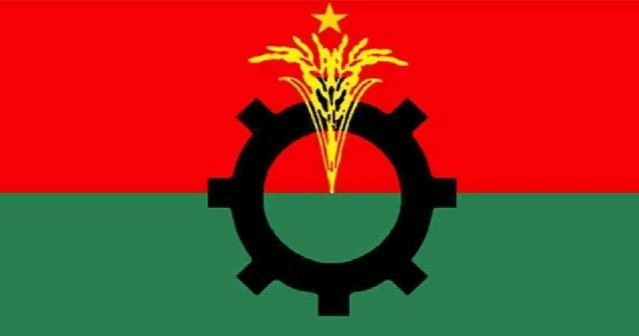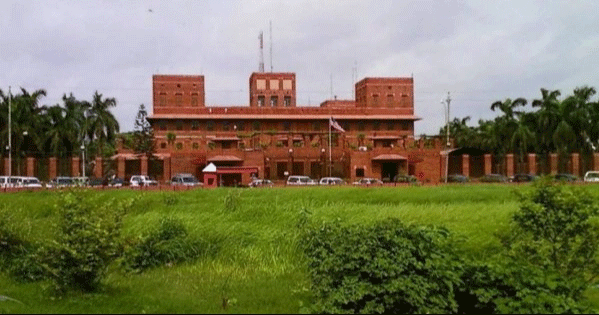Where is surplus rice?
Despite increased price, record production
Mahfuja Mukul: The government has been making the claim that Bangladesh is self-sufficient in food for the past several years. Even paddy production is making records every year. However, there is a big difference in the data of the Ministry of Agriculture and Bangladesh Bureau of Statistics (BBS) regarding rice production. However, there is continuous success in paddy-rice production. This year’s boro season also saw a bumper yield of paddy. The target production of 2 crore 15 lakh 337 tons has already been exceeded. But it has no effect on the market. Consumers have to pay high prices for rice.
According to the data, currently the demand of rice in the country is slightly more than three million tons per year. According to the statistics of various public and private organizations, the production of rice in the country is about one million tons more than this demand. Last year (in 2022), the total rice production in the country in three seasons was 40.4 million tons, which is a record production in one year, according to the Ministry of Agriculture. Rice production in the country has increased by 29 percent in the last 14 years. Although the production in the country is more than the demand, due to various reasons, several lakh tons of rice are imported annually. However, the price is continuously increasing. As a result, the question naturally arises, where is the surplus rice going?
According to market statistics, the price of rice has increased by nearly 50 percent over the same period this year compared to the average retail level price of January 2020.
Agricultural researcher and economist Jahangir Alam Khan told that the information given by the Ministry of Agriculture and the Directorate of Agricultural Extension under it about the production and demand of rice is often inconsistent. Again, there is a big difference between their data and Bangladesh Bureau of Statistics (BBS) data. The information provided is inconsistent.
He said, the amount of rice production that is being talked about in the country may not be. Despite repeated calls to clarify the matter, it is not happening. And businessmen are taking advantage of this information outage. The government is also unable to plan properly. That is why rice has to be imported at the end of the year even though there is talk of massive production. Consumers are buying at higher prices.
Meanwhile, the arrival of new Boro paddy rice in the retail and wholesale markets of the capital has not affected the prices. Minikits are being sold at Tk 67 to Tk 70 in the wholesale market, which the consumer has to buy at Tk 75 in retail. The price of coarse rice has increased more than before. Swarna and Pajam varieties of rice are being sold at Tk 50 to Tk 52 per kg in the wholesale market, which is Tk 2 higher than earlier. Consumers have to buy this rice at retail for Tk 55 to Tk 60.
Rubel Hossain, owner of the popular rice agency in Babubazar, the capital’s largest wholesale rice market, told that there was no change in the price of rice after the arrival of Boro paddy. On the contrary, the price of coarse rice increased by Tk 2.
He said that the supply of rice in the market has increased due to the arrival of new rice. But the price didn’t go down like that, it didn’t go up too much. Rather, I hear that many old rice remains. They are now being released in the market.
The cost of paddy production has increased slightly this year. According to the Bangladesh Rice Research Institute (BRI), the production cost of one kg of rice has increased by Tk 3 to around Tk 41 this Boro season. The cost of paddy production has increased from Tk 28 to around Tk 31. That is, the production cost of paddy and rice has increased by 10 percent.
Cost of boro production has increased due to purchase of diesel, electricity and fertilizer at higher prices than last year. As a result, the price of rice is expected to increase slightly this year. But the increased cost has fallen on the shoulders of the farmer. Because despite the increase in production cost, Boro paddy was bought and sold at last year’s price. Still, each maund of paddy is being sold between Tk 200 and Tk 300.
Laik Ali, the former general secretary of the Chalkal Malik Samiti, told that the market is now out of control. So why the disruption in the case of rice? Rising prices of other commodities also have an impact on rice prices. If those who sell rice do not get the price, then how will their lives continue? Accordingly, it can be said that the price of rice is stable compared to other commodities.
He said, this year the price of paddy is under control. Actually, there is no problem from farmer to mill. The problem is going to the market. There is a huge difference in the price of rice in the retail market from the millgate price. We keep saying this, but no one is controlling the retail market. All responsibility falls on the shoulders of the millers. In fact, none of the farmers and millers are benefiting. Whether the price is low or high, profit is eaten by the sellers.
Professor of Agricultural Business and Marketing Department of Sher-e-Bangla Agricultural University. Rashidul Hasan told that it is true that the production cost of rice has increased. But if the price of rice does not increase in that way, the farmer has to bear the additional cost of the production cost. It did not affect match or sales levels.
He said, there is a gap of Tk 12 to Tk 15 per kg from the mill to reach the consumer level. It’s unusual. As a result, both consumers and farmers are affected.
Dr. Rashidul Hasan also said that the government should take a strong role in controlling the market. Besides, farmers should reduce their additional cost by subsidizing them.
President Joe Biden tests positive for COVID-19 while campaigning in Las Vegas, has ‘mild symptoms’
International Desk: President Joe Biden tested positive for COVID-19 while traveling Wedne…








